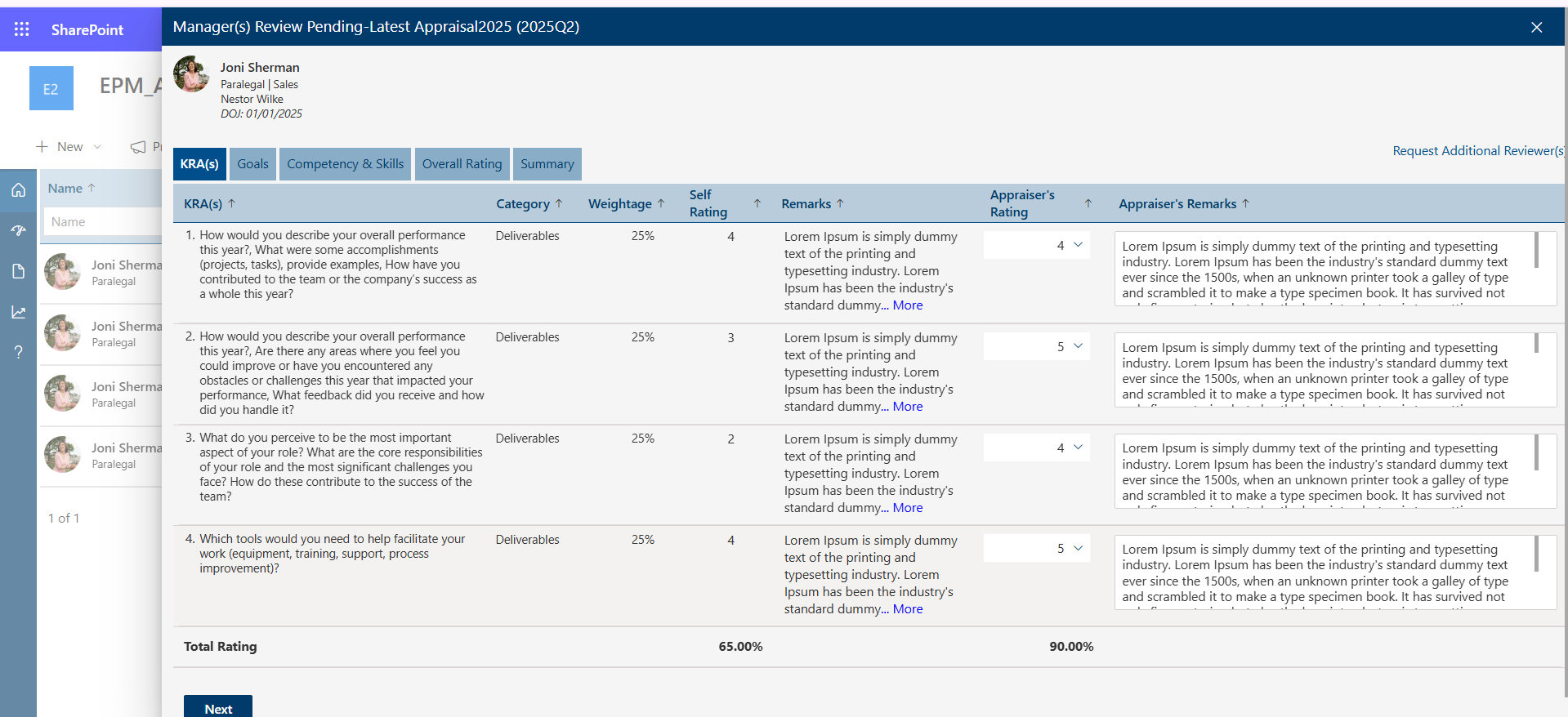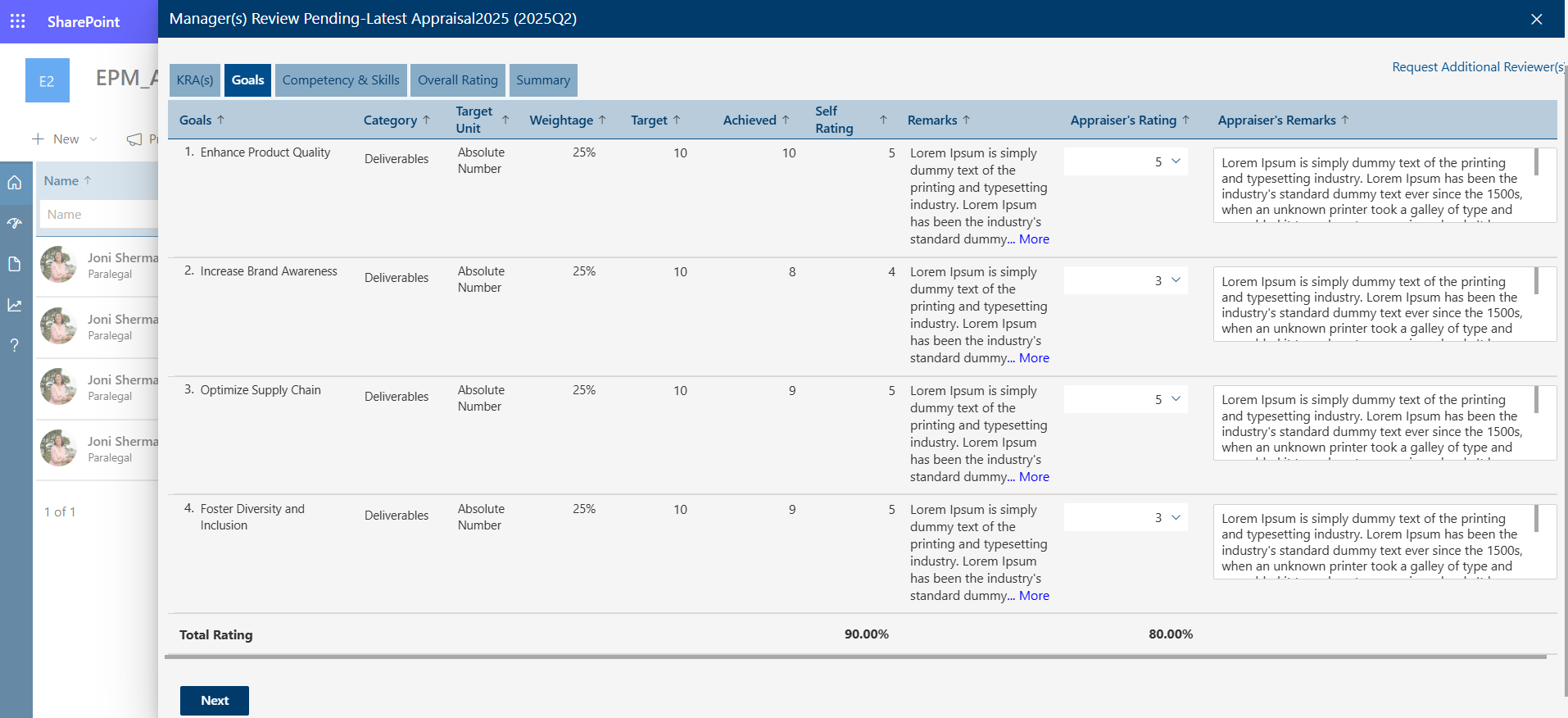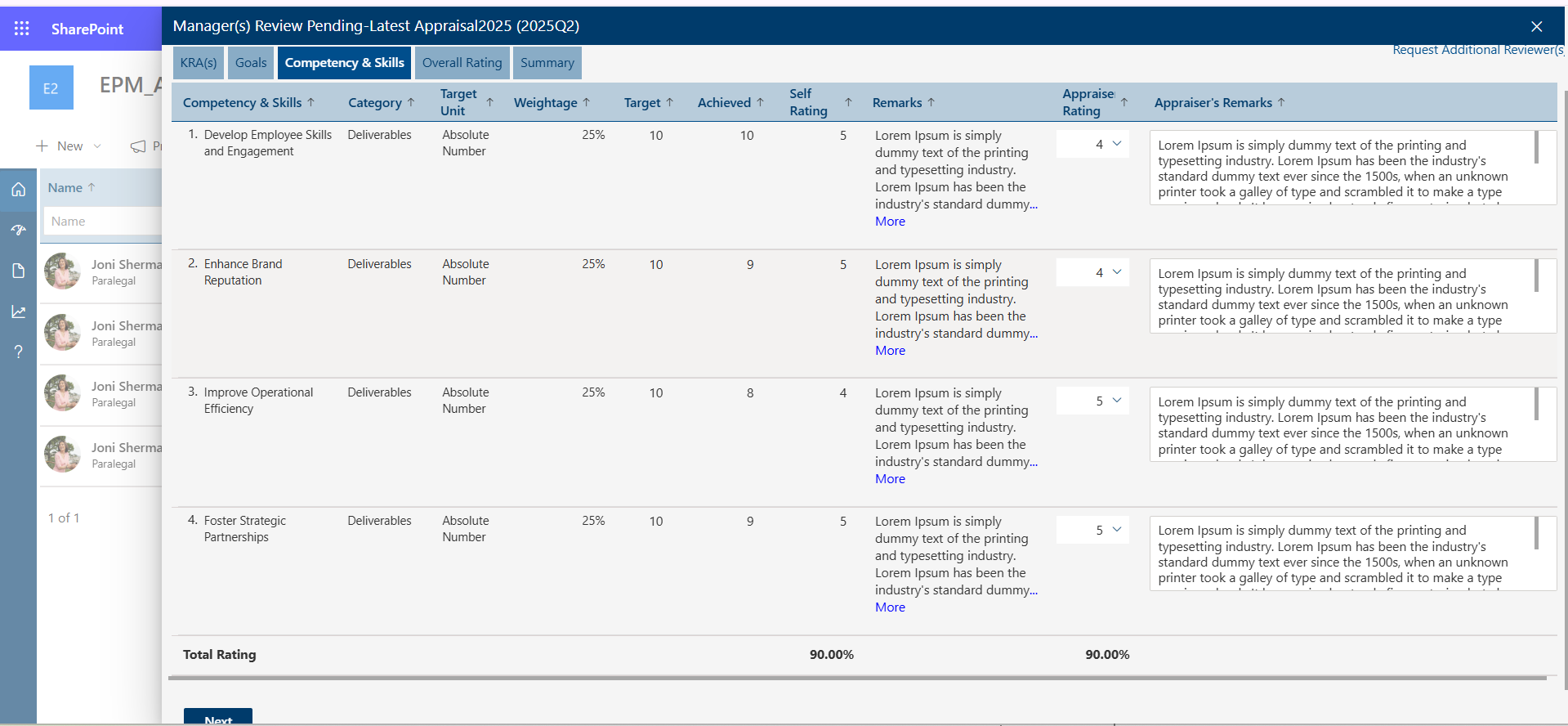How to Review a Manager's Performance in 2025

In today’s fast-changing workplace, strong leadership is not just helpful it is essential. Good managers keep teams motivated, focused, and moving in the right direction. Managers play a pivotal role in guiding teams, driving performance, and fostering a positive workplace culture. However, assessing a manager’s performance is not just about ticking boxes it’s about understanding their impact on the team and the organization.
Recent studies highlight the importance of regular performance reviews. For instance, organizations that implement continuous feedback mechanisms report a 40% increase in employee engagement and a 26% improvement in overall performance. These numbers highlight just how important it is to check in regularly and give honest, helpful feedback. It’s how real growth and better leadership happen. In this guide, we’ll explore practical steps to effectively review a manager’s performance in 2025, ensuring that feedback is meaningful, actionable, and aligned with organizational goals.
What Is a Manager's Performance Review?
A manager’s performance review is a regular check-in to see how well a manager is doing their job. It looks at how they lead their team, handle problems, meet goals, and help the company move forward.
But it’s not just about hitting numbers or deadlines. It’s about how the manager supports their team, builds trust, communicates clearly, and creates a positive work environment.
A good review helps everyone grow both the manager and the team they lead. It also gives the organization a clear view of where support or improvement is needed.
When done right, it builds stronger leadership and drives long-term business success.
Why Reviewing a Manager's Performance Matters
Managers are the heart of any team they guide, support, and influence the day-to-day experience of employees. When they lead well, everything works better. They are not just team leaders they are decision-makers, motivators, and the bridge between employees and leadership. How well a manager performs directly affects how teams feel, how much they get done, and how smoothly the company runs. That’s why it’s essential to regularly review a manager’s performance not just once a year, but as part of an ongoing process.
Here’s why it really matters:
- Improves Leadership Skills: When managers get thoughtful feedback, they can see what’s working and what’s not. This helps them become better leaders who know how to guide and support their teams.
- Builds Trust and Confidence: Employees feel more supported when their managers are growing and improving. That trust leads to stronger working relationships and a healthier team dynamic.
- Increases Team Motivation: A well-reviewed and supported manager often leads by example. This creates a ripple effect, encouraging the team to stay focused, work hard, and feel proud of what they do.
- Keeps Everyone on the Same Page: Reviews help make sure managers are working toward the same goals as the company. This alignment helps avoid confusion and keeps everyone moving in the same direction.
- Creates a Culture of Accountability: Regular reviews show that performance and growth matter at every level. It sends a message that everyone including leaders is expected to learn and improve.
- Identifies Strengths and Gaps: Reviews highlight what a manager is doing well and where they may need extra training or support. This allows the company to offer help before problems grow too big.
When manager performance is reviewed with care and honesty, it helps the whole organization stay strong and focused.
Key Components of an Effective Manager Review
A meaningful manager review goes beyond ticking boxes it is about having real conversations that help leaders grow, support their teams better, and drive lasting impact. It is about truly understanding how well a manager supports their team and helps the company move forward. To do that, your review process should be clear, thoughtful, and supportive. Here are the essential pieces that make a manager review work.
1. Clear Evaluation Criteria
Start by setting clear expectations. Use SMART goals Specific, Measurable, Achievable, Relevant, and Time-bound to define what success looks like for each manager. Instead of just saying “improve communication,” set a goal like “hold weekly team meetings with clear agendas and documented action items.” When managers know what they’re aiming for, it’s easier for everyone to measure progress.
2. 360-Degree Feedback
One of the best ways to understand a manager’s performance is to gather feedback from all directions not just their boss. Ask team members, peers, and other department heads how they experience the manager’s leadership. This gives a fuller, more honest picture. A manager might seem organized to upper management but could be missing key communication cues with their team. Hearing from different people adds balance and depth to the review.
3. Regular Check-Ins
Do not wait until the end of the year to talk about performance. That’s too late to fix problems or build on wins. Instead, hold regular check-ins every quarter, or even monthly if possible. These smaller conversations help managers stay on track, feel supported, and make changes faster. Plus, they reduce the pressure that often comes with one big annual review.
4. Actionable Feedback
Telling someone they “need to improve” doesn’t help much. Instead, give feedback that’s specific and useful. For example, instead of saying, “You’re not leading meetings well,” say, “Try setting clear agendas and following up with notes to make meetings more effective.” Actionable feedback gives managers a real path to follow and shows you’re invested in their growth.
5. Follow-Up and Accountability
A review does not mean much if nothing happens afterward. Always set a time to follow up on the goals and suggestions discussed. This could mean checking in after a month or reviewing progress in the next quarter. Create a system like shared goals or simple tracking sheets so that both the manager and their leader can stay accountable. Growth takes time, and follow-through helps it stick.
Benefits of Manager Performance Reviews
Checking in on how your managers are doing is just a formality it’s a powerful way to shape stronger teams and a healthier workplace. Here’s why regular manager performance reviews matter more than ever:
- Improves Leadership Accountability
When managers know they’ll be evaluated regularly, they stay focused on what truly matters. Reviews help align their daily actions with company goals and make sure they’re not just managing tasks but leading people with intention and integrity. - Boosts Team Morale
Let’s face it: a team’s energy mirrors their leader’s behaviour. When a manager grows through feedback and becomes more supportive, the team naturally feels heard, respected, and motivated. A good review helps turn okay managers into great ones and that’s great for everyone. - Identifies Skill Gaps Early
No one’s perfect and that’s okay. But regular reviews help spot where a manager might need support. Whether it’s communication, time management, or conflict resolution, catching those gaps early means you can offer training or coaching before little issues turn into big problems. - Supports Promotions and Succession Planning
Want to grow leaders from within? Manager reviews give you real data and honest feedback to identify who’s ready for the next step. It’s a smarter, fairer way to plan for the future instead of relying on gut feelings or favouritism. - Reduces Employee Turnover
Here’s a stat that says it all: Gallup reports that 70% of team engagement is tied to the manager. When leaders improve, employees are more likely to stay, grow, and thrive. Investing in manager reviews means fewer good people walking out the door. - Builds a Culture of Continuous Growth
When reviews are handled with care, they send a clear message: “We’re all here to improve even the ones at the top.” That creates a safe and honest culture where Feedback should feel like a helping hand, not a slap on the wrist it’s meant to guide managers forward, not hold them back.



Steps to Review a Manager's Performance
A good performance review is not about pointing fingers it is about helping managers grow into better leaders. Here’s a step-by-step guide to make the process effective, supportive, and future-focused.
- Preparation
Start by gathering all the facts. Look at key metrics like team results, project deadlines met, and employee retention. Also review past feedback, 1:1 notes, and any performance data tied to the manager’s role.
This step sets the stage and ensures your review isn’t based on opinion but grounded in actual performance and results. - Self-Assessment
Before you give feedback, ask the manager to reflect on their own work. Encourage them to be honest what went well, what did not, and what they’d like to improve.
This helps build self-awareness and makes the upcoming conversation more balanced and open. When a manager is part of the process, they are more likely to be engaged in their own growth. - Feedback Collection
This part is crucial. Talk to the people who work closely with the manager team members, peers, and even clients if needed.
Use surveys, anonymous forms, or short interviews to gather honest insights on communication, decision-making, supportiveness, and leadership.
Multiple perspectives help paint a full picture, not just the one from the top down. - Review Meeting
Now it’s time for the real talk. Schedule a private, respectful meeting where you can share what you’ve found both the wins and the areas that need work.
Start with the positives, then walk through any concerns. Keep the tone helpful, not critical. This is a conversation, not a courtroom.
Make sure the manager feels heard and involved in every part of the discussion. - Development Plan
Once you have had the talk, co-create a clear action plan. What should they improve? What training or coaching can help?
Set short- and long-term goals that are realistic and tied to their role. Maybe it’s better delegation, more transparent communication, or strengthening team trust.
Write it down, set timelines, and offer support this is about growth, not judgment. - Monitoring
A review is not just a once-a-year task it is a continuous conversation that helps managers grow, lead better, and stay connected with their teams. Check in regularly to see how the manager is doing. Are they hitting the goals? Do they need more support?
Offer feedback, encouragement, and adjustments as needed. Continuous improvement comes from continuous support.
Common Challenges and How to Overcome Them
Reviewing a manager’s performance is not always easy. Sometimes, things get tricky emotions, misunderstandings, or just plain old awkward moments. But the good news? Most challenges can be handled with the right approach. Here’s what usually gets in the way and how to deal with it smartly and smoothly.
Bias in Feedback
One of the biggest hurdles is bias people sometimes let personal feelings, favouritism, or team politics influence their feedback. That skews results and makes reviews unfair.
How to Fix It:
Use anonymous surveys and 360-degree feedback tools. When people feel safe and know their responses won’t be traced back to them, they’re more likely to be honest. You’ll get cleaner, more useful insights without all the drama.
Resistance to Feedback
Some managers shut down the moment they hear the word “feedback.” They might get defensive or take it personally, especially if they’ve never been coached before.
How to Fix It:
Turn feedback into a natural part of the everyday workflow not something that catches managers off guard once a year. When you build a culture that sees feedback as growth fuel not punishment managers start to welcome it. Also, frame the review as a support system, not a scorecard. You’re there to help them succeed, not to call them out.
Lack of Clear Metrics
You can not review what you have not defined. Many reviews fall flat because there are no clear expectations or goals. This leads to confusion and vague feedback like “needs to improve communication.”
How to Fix It:
Set clear, measurable performance indicators (KPIs) tied to the manager’s role. For example: team retention rate, project delivery time, employee engagement scores, etc. These hard numbers make it easier to track progress and reduce guesswork during reviews.
Time Constraints
Let’s be real everyone’s busy. Reviews get pushed to the bottom of the list, especially when you’ve got fires to put out.
How to Fix It:
Make it part of your routine. Use tools like PM365 to automate parts of the review process reminders, templates, tracking it saves hours and ensures it actually gets done. Remember, skipping reviews now usually means bigger problems later.
Inconsistent Review Practices
Some managers get detailed feedback. Others get a five-minute chat and a “You’re doing fine.” That’s not fair or effective.
How to Fix It:
Standardize the process across departments. Build a clear, easy-to-follow review process so every manager gets the same fair shot. When the steps are consistent, there are no surprises just honest growth. Consistency builds trust.
Fear of Conflict
Giving tough feedback is uncomfortable. No one likes to upset someone or create tension. But avoiding hard truths only delays improvement.
How to Fix It:
Train your reviewers. Teach them how to deliver feedback with empathy and clarity. Use “start-stop-continue” models or sandwich techniques (positive–critique–positive) to keep the tone helpful.
How to Implement Manager Performance Reviews
Conclusion
Reviewing a manager’s performance is crucial for organizational growth. By implementing structured, fair, and consistent review processes, companies can ensure their leaders are equipped to drive success.
Book a Demo
Interested in optimizing your manager review process? Book a demo with our experts to explore tailored solutions that fit your organization’s needs.
Frequently Asked Questions
What is the best way to start when learning how to review a manager's performance?
The best way to start is by setting clear goals and evaluation criteria tied to business outcomes. Before conducting the review, gather relevant data, feedback from peers, and a self-assessment from the manager to ensure a well-rounded perspective.
How often should companies conduct manager performance reviews?
If you are wondering how to review a manager’s performance effectively, quarterly or bi-annual check-ins are recommended. Regular reviews allow for real-time feedback, quicker improvements, and stronger alignment with company goals.
What tools can help automate how to review a manager's performance?
Using tools like PM365 can simplify how to review a manager’s performance by offering built-in templates, automated reminders, centralized dashboards, and tracking features to manage recurring reviews consistently.
How do you provide constructive feedback during a manager review?
To master how to review a manager’s performance constructively, focus on actionable feedback. Highlight both strengths and areas of improvement with specific examples and always offer support or training options for growth.
Why is 360-degree feedback important in how to review a manager's performance?
If you want to understand how to review a manager’s performance from all angles, 360-degree feedback is key. It collects insights from peers, team members, and leadership, giving a balanced and accurate view of a manager’s real-world impact.

























